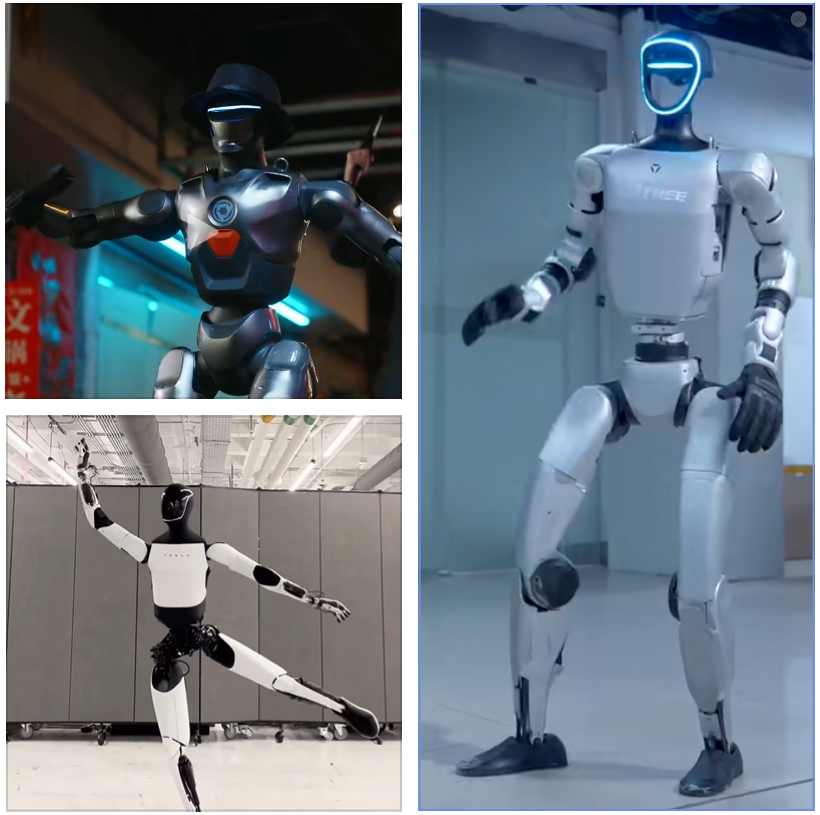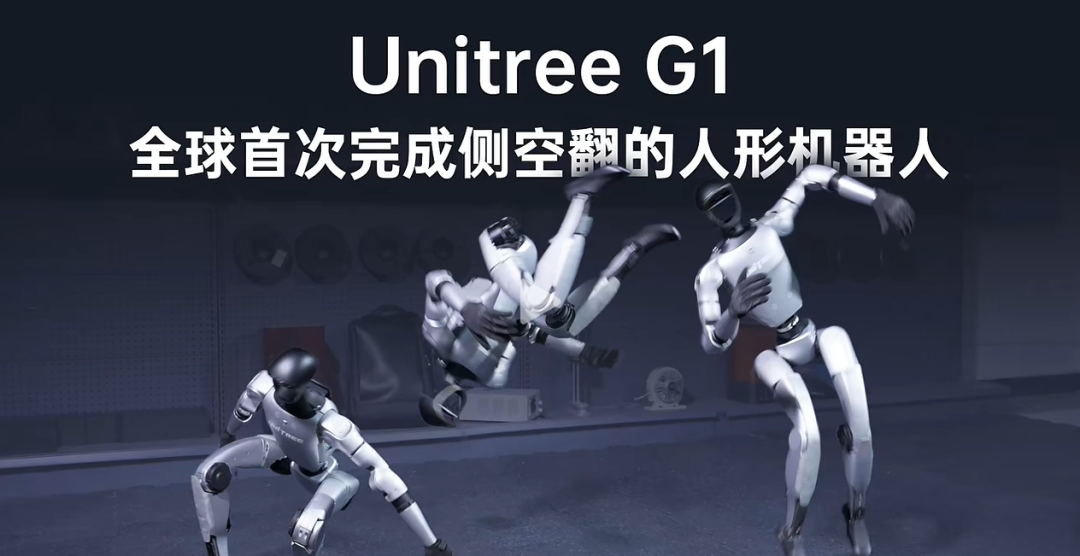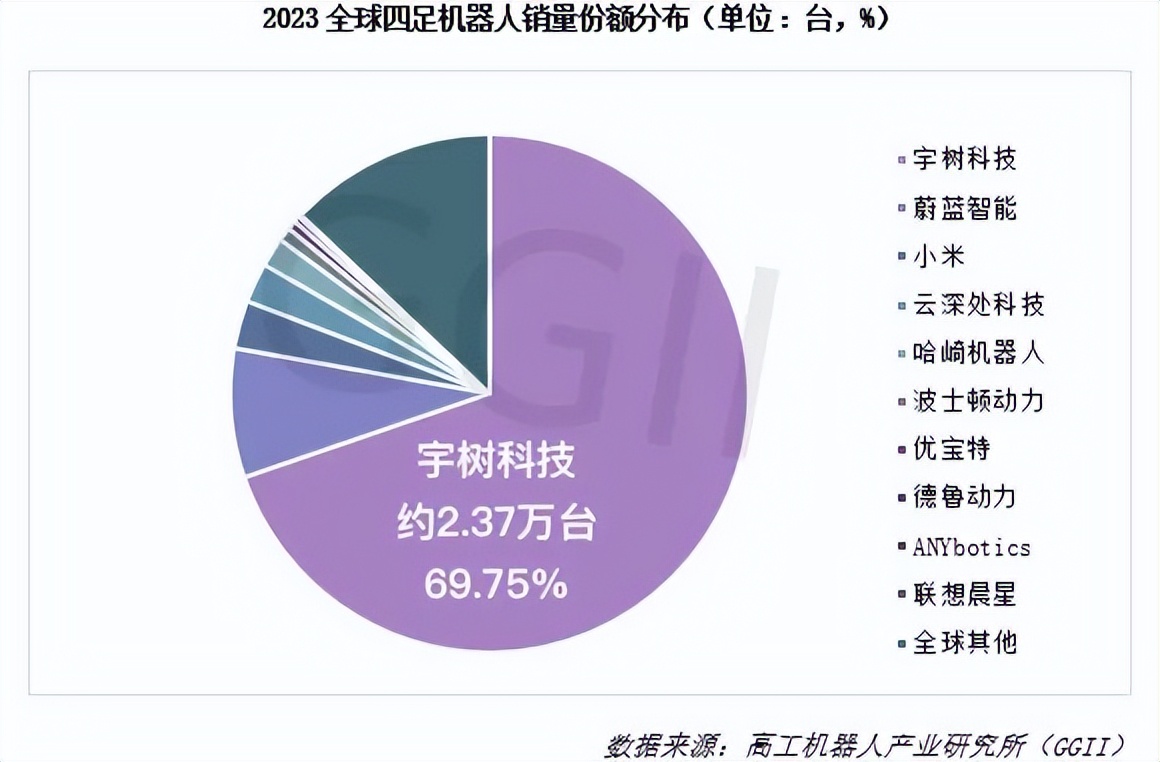Tesla's Optimus Keeps Dancing, While Unitree's Robots Fly Off Shelves
![]() 05/20 2025
05/20 2025
![]() 691
691
Source | Yuan Media Hui
The competition in the humanoid robot industry is just heating up.
Recently, two leading players in the field, Tesla and Unitree Technology, have shared their latest updates. Tesla has released two videos showcasing its humanoid robot Optimus dancing, sparking intense market discussions. Meanwhile, Unitree Technology's founder Wang Xingxing spoke at both the Shanghai 50 Young Innovators and Entrepreneurs Forum and the World Digital Education Conference, stating that "many companies have been overwhelmed with orders" and that "AI will profoundly change education, but it will not replace teachers," further fueling the excitement around humanoid robots.
The frequent positive news has further cemented the industry's and capital markets' belief that "2025 will be the inaugural year for mass production of humanoid robots."
Indeed, since 2025, the rivalry among major humanoid robot companies has intensified. Unitree Technology recently released a dancing video of its popular humanoid product G1, demonstrating its spinning kick skills and achieving the world's first fish leap and side somersault. On the other hand, Zhongqing Robotics gained popularity with a "tomahawk dance" video and also completed the world's first front somersault.

Image Source: Unitree, Tesla, Zhongqing Video Accounts
In the Optimus dancing videos, the robot demonstrated seamless transitions from modern dance to ballet, with precise timing, showcasing the rapid progress in humanoid technology.
However, beyond these lively appearances, a closer look at both Optimus and Unitree Technology's humanoid robots reveals a deeper competition involving technical approaches, market strategies, and commercialization.
01
Hardware King or AI Supreme?
In the battle for humanoid robot supremacy, Tesla and Unitree Technology exhibit distinct technical focuses.
According to Tianyancha, Unitree Technology, founded in 2016, has invested heavily in hardware research and development since its inception, carving out a unique technical path.
Taking the Unitree G1 humanoid robot as an example, its hardware performance stands out. By independently developing core components, Unitree Technology has achieved a win-win in cost control and performance enhancement. For instance, the cost of its self-developed harmonic reducer is only one-third of similar Japanese products.
In its motion capability demonstration, G1's completion of a 720-degree spinning kick, high-difficulty in-place side somersaults, fish leaps, and other actions showcases its robust hardware and motion control algorithms. This meticulous refinement of hardware enables Unitree robots to maintain stable performance in complex terrains and high-intensity tasks, laying the groundwork for applications in industrial inspections, logistics handling, rescue, and other fields.

Image Source: Unitree Technology Video Account
Conversely, Tesla's Optimus follows a technical path driven by AI technology as its core.
Relying on its accumulated AI algorithms and data advantages in autonomous driving, Tesla aims to endow Optimus with powerful autonomous decision-making and learning capabilities. For instance, Optimus's visual perception system directly reuses the camera array of FSD, and its neural network training platform shares Dojo supercomputing resources.
This further bolsters Optimus's AI learning ability, enabling it to handle more complex tasks and scenarios. As previously demonstrated, Optimus can complete complex tasks such as folding clothes and sorting items, which is inseparable from the support of advanced AI algorithms.
However, over-reliance on AI also presents challenges. In practical applications, Optimus's balance and real-time reaction speed still need improvement. When facing emergencies, its decision-making and execution abilities are not yet stable. This indicates that the application of AI technology in the field of humanoid robots still requires optimization and refinement.
Behind this technical divide, a deeper game is also playing out in the capital market. Data shows that in recent years, the investment trend in the global robotics field has shifted, with more venture capital flowing to AI training companies, and the valuation model of hardware enterprises loosening.
"The strongest robotics company will undoubtedly be the strongest AI company," Wang Xingxing said at the 6th Shanghai 50 Young Innovators and Entrepreneurs Forum. He also predicted that within the next 2 to 5 years, the focus of intelligent robotics technology will be on the research and development of end-to-end intelligent large models.
In other words, Wang Xingxing also believes that AI holds the key to breaking the deadlock for robots in the future. Regarding technical approaches and other issues, Yuan Media Hui sent an inquiry email to Unitree Technology but did not receive a response as of press time.
02
Positioning Differentiation
The choice of two distinct technical approaches has led to differing application scenarios and market layouts for Tesla and Unitree Technology.
While Optimus has been successively deployed in Tesla's factory workshops to verify its reliability, Unitree Technology, adorned in a northeastern-style floral coat and holding a red handkerchief, performed a "cyber yangko" dance during the Spring Festival Gala.
Through extreme cost control, Unitree Technology has taken the lead in tapping into the mass market. In 2024, the release of the G1 with an entry price of 99,000 yuan allowed many small and medium-sized enterprises and tech enthusiasts to enter the field of humanoid robots, significantly lowering the market entry threshold.
In mid-February 2025, the aforementioned products sold out instantly upon their first launch on JD.com. In the second-hand market, Unitree G1 sparked a leasing boom, with numerous leasing merchants emerging, advertising "Spring Festival Gala same model robot leasing" and "Unitree robot." Daily rental prices for humanoid robots range from several thousand to tens of thousands of yuan, with diverse leasing uses covering commercial performances, science education, grand openings, and other scenarios.
This deep excavation of the mass market has not only brought considerable economic benefits to Unitree Technology but, more importantly, through extensive market applications, Unitree can gather substantial user feedback and usage data to support product iteration and upgrades.
On the other hand, Tesla's Optimus focuses on the high-end market, initially concentrating on the field of factory automation, aiming to replace workers on assembly lines to complete repetitive, high-intensity tasks.
This market strategy also faces challenges: the production environment in factories is complex and diverse, with extremely high demands for the robot's adaptability and reliability. Optimus's current technical level is still challenging to fully meet these requirements. Additionally, the high cost makes some enterprises hesitant to introduce Optimus.
Although Musk stated that when production exceeds 1 million units, the unit price of Optimus is expected to drop to $20,000, achieving this goal still requires overcoming numerous technical and production hurdles.
Currently, the industrial scenario is widely regarded as the most promising application scenario for large-scale implementation.
"In terms of application alone, I believe the industry will be easier. But for popularization, especially commercial popularization, it should be in homes or similar scenarios," Liang Kaixiang, a senior product manager of robots, told Yuan Media Hui regarding the application of humanoid robots.
"In industrial scenarios, task objectives and working environments are relatively determined. In such a determined working condition, developers can relatively easily develop humanoid robots to complete corresponding tasks. For example, the humanoid robot at the Spring Festival Gala, or the logistics handling robot previously developed by Boston Dynamics. Therefore, if we only consider the deployment of humanoid robots, closed and determined industrial scenarios are more conducive to their deployment," Liang Kaixiang explained.
Compared to application issues, the commercial popularization of humanoid robots clearly places more emphasis on "cost-effectiveness."
"The kind of industrial scenario mentioned earlier already has more cost-effective products available. Humanoid robots can hardly compete with previous products or solutions. However, the multi-sensor, multi-degree-of-freedom joints, and AI capabilities possessed by humanoid robots give them an edge in handling complex tasks and non-standard work," Liang Kaixiang said. "Yet, most of these complex tasks and non-standard work arise in daily life rather than industrial scenarios. Therefore, from the perspective of product functional advantages, demand matching, and market size, if humanoid robots aim for commercial popularization, they will most likely rely on non-standardized and complex task-heavy scenarios such as households."
03
Commercialization Challenges
The difficulty of commercialization is a common hurdle currently faced by the humanoid robot industry.
To address this challenge, a group of leading humanoid robot companies, including Unitree Technology and UBTech, are exploring diversification in application scenarios. They are not only actively deploying in the industrial field but also deeply expanding into consumer markets such as education and entertainment.
In the industrial field, Unitree robots have been applied in scenarios like factory inspections and logistics handling, helping enterprises improve production efficiency and reduce labor costs. In the field of education, Unitree Technology's robots, with their high cost-effectiveness and open SDK, have attracted the attention of many educational institutions and schools, becoming an important tool for fostering students' interest and innovation in science and technology.
"Education-oriented robots and humanoid robot products developed by Unitree Technology and other companies have entered nearly 1,000 universities worldwide and generated more than 3,000 excellent technical papers. They are not simple electronic teaching aids but facilitate students' transition from passive education and knowledge transfer to active knowledge construction through advanced multimodal interaction technology," Wang Xingxing said at the 2025 World Digital Education Conference.
Beyond industrial and educational scenarios, Unitree Technology has also garnered attention in the entertainment field due to its popularity during the Spring Festival Gala. For instance, its applications in commercial performances, live streaming, and other scenarios demonstrate its potential in the consumer market. At AWE 2025, Unitree G1 "stood" for Hisense, attracting attention and driving traffic for the enterprise through various actions. Other humanoid robots representing home appliance companies at the event included "Xiaomai" from Magic Atom Robotics and "Xiaoxing" from Xingdong Jiyuan.
Regarding the phenomenon of humanoid robots representing home appliance companies, a senior industry insider named Muji (pseudonym) told Yuan Media Hui, "It feels like both parties are meeting each other's needs. Humanoid robots lack deployment scenarios, and they claim to cooperate with large enterprises to find them. On one hand, large enterprises can endorse them, and on the other hand, when seeking funding, having large enterprise deployment scenarios makes it easier to obtain it. For large enterprises, they are unable to maintain a department for humanoid robot research and development, but they also need some achievements to prove that the enterprise is engaged in innovation."
Nonetheless, this diversified expansion of application scenarios has, to a certain extent, broadened Unitree Technology's commercialization horizons.
GGII research data shows that in 2023, Unitree Technology accounted for 69.75% of global quadruped robot sales, ranking first in scale. Additionally, an early investor in Unitree revealed to the media that Unitree's financial statements have been profitable every year since 2020.

Compared to a group of domestic leading humanoid companies like Unitree Technology, Tesla's Optimus continues to explore the path of professional development. For instance, in the industrial field mentioned earlier, it has begun testing tasks such as battery sorting and part handling in its own factories.
Tesla's goal is to accumulate technical experience and market reputation through applications in high-end industrial fields and then gradually expand to broader markets such as home services.
It is worth mentioning that in terms of ecosystem, Tesla and Unitree Technology have also chosen different directions.
Tesla has built a closed-loop industrial ecosystem, tightly integrating Optimus with Tesla's electric vehicles and energy business. In this ecosystem, Optimus can share data and collaborate with Tesla's other products and services, with potential application scenarios in areas such as home energy management and autonomous driving coordination.
Conversely, Unitree Technology is committed to building an open robot ecosystem, attracting a large number of developers and partners by opening its SDK.
For the above two ecosystems, it is too early to draw conclusions. However, the Optimus dancing video mentioned at the beginning of this article also reveals that humanoid companies are eagerly showcasing their stability and flexibility to the market.
Regarding this, Liang Kaixiang opines, "The prevalent issue with humanoid robots at present is the lack of practical applications, prompting companies to resort to various publicity tactics. Initially, Tesla's robots didn't dance; they were diligently working in factories. Now, however, they too are seen dancing. These dancing promotional videos appear to have originated in China, highlighting the robots' flexibility and coordination. From what we've observed, the motion control capabilities of Unitree and Tesla's robots are on par."
In his perspective, "Overall, it still feels more like a spectacle. I tend towards pragmatism, believing that true potential lies in real-world applications. Mere showmanship, I view merely as entertainment."
What kind of competitive landscape will emerge between Tesla and Unitree Technology in the future?
Some images are sourced from the internet. Kindly inform us for removal if there is any infringement.





